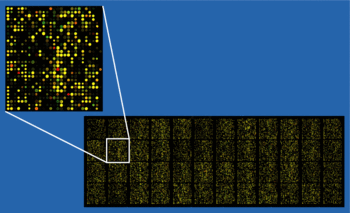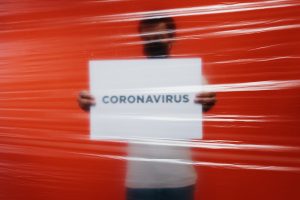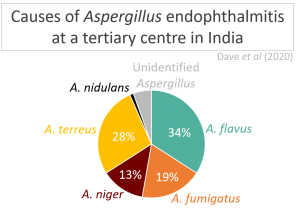Submitted by Aspergillus Administrator on 11 June 2010
Aspergillus spores are a major part of the process by which the fungus gets into our lungs. They are extremely small and very easily blown into the air and inhaled. If they end up in the lungs of someone who is immunocompromised or allergic they can then cause health problems, sometimes very serious health problems.
For the rest of us there is no problem. Our lung surfaces are covered with epithelial cells and single celled macrophages and which actively pursue and engulf spores, completely destroying them and removing them from our bodies. In order to work out what is going wrong when spores manage to stay and infect we need to understand the normal working mechanism.
Our cells normally keep most of our genes switched off until they are needed. It would be a huge waste of energy & resources to leave everything switched on all the time – rather like someone leaving all the lights on in their home 24 hours a day – think of the electricity bill! This means that when there is a change in the environment of a cell – for example when a spore lands on a lung epithelial cell lining the airways – several genes are switched on and it will be those genes that play an important part of the process of preventing infection.
The first step is to find out which genes are switched on (or off) when spores land on lung tissue. This is achieved in this paper by introducing jellyfish genes (GFP) into the fungi that produce the spores. This makes them easy to spot using a fluorescent light and a cell sorting machine (FACS) as they glow green.
The spores were then incubated with lung epithelial cells, sorting out which cells had stuck to a spore using the FACS machine, giving us a sample containing only cells with attached spores.
Using this incredible technology, it is now possible to find out which genes have been switched on in the cells that bound spores by the use of whole genome microarrays – this technology makes it possible to identify which genes are switched on and by how much.
The paper identifies 889 genes that are switched on or off, many of which are for cell processes that are expected and already known about (inflammation, cell repair, cell cycle) but with more work some may be found that are more specific to the process of killing spores and thus teach us something new about the processes involved.
Carrying out the same process using cells taken from susceptible people could for example show us which genes are not working properly and give us a strong clue as to why those people are more vulnerable to infection.
News archives
-
Title
Date




